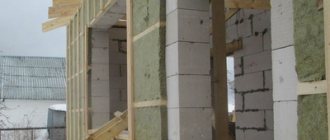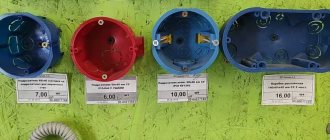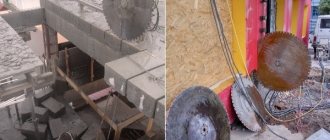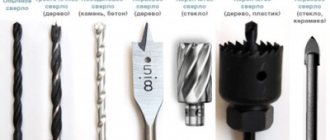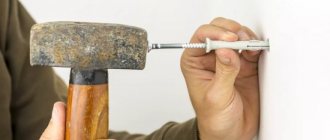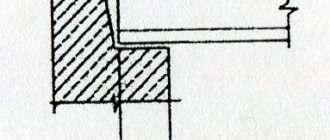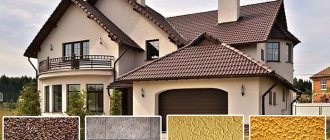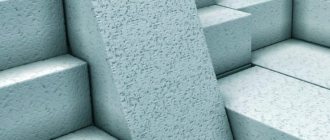Concrete is considered a practical and unpretentious building material, which serves as the basis for various residential and permanent buildings. The question often arises: what is the best way to insulate concrete walls from the inside? This material has certain quality characteristics that determine its popularity in the construction market. Despite the large list of its advantages, the composition of the mixture also has its disadvantages: the building material conducts heat well, and this quality requires additional thermal insulation of the building.
Insulation instructions
Regardless of the materials used for thermal insulation of the apartment, it is important to take into account a number of rules and nuances:
You can start insulating work only in the warm period, when it is dry outside. Before fixing the insulation, you need to dry the surface
For such purposes, the use of a heater is allowed. Next, you need to completely clean the structure, paying special attention to places where moisture and fungus accumulate. Treat with an antiseptic and apply a layer of primer. Before each subsequent stage, you need to wait until the previous layer has dried.
Expanded polystyrene
The material is popular due to its availability and ease of gluing yourself.
To apply insulation you need to follow these instructions:
- Apply adhesive backing to the back of the tile. It is advisable to do this pointwise, maintaining intervals of 30-35 cm.
- When gluing products, do not allow the seams in the rows to coincide.
- Next, apply fiberglass mesh and an additional layer of glue.
- A steel profile is used to strengthen the corners.
In addition to glue, disc-type dowels are used as fixing elements. The reinforcement mesh should have cells of 3-5 mm and an overlap of 10 to 12 cm. If the building was built according to the old plan, the insulating layer should be 8 cm thick.
Polyurethane foam
Surface treatment with polyurethane foam has the following advantages:
- The material does not require the additional use of plaster or other protective compounds, since it is not afraid of the influence of ultraviolet rays and mechanical stress. This helps to extend the service life.
- During operation, polyurethane foam does not lose its presentable appearance and competently masks all defects in the walls.
- A technical endoscope is used to check the quality of the pouring.
- Using polyurethane foam you can insulate various structures with a hollow structure.
Mineral wool
The technology for installing the slabs involves fixing a special metal or wooden frame, as well as following the following instructions:
- The installation is carried out in 2 stages: in the first, the space between the frame and the surface is filled, and in the second, the gaps in the frame are filled.
- Products made from polyurethane foam must have a thickness of 50 mm and a density of 75 kg/m³.
- After completing the fixation of the slabs, it is necessary to fix the vapor barrier film.
- The film is fixed with an overlap on the edges of the slabs.
- The points to which the film adheres are treated with sealant.
- Finally, drywall is attached and finishing work is carried out.
Thermal insulating plaster
Often the insulation layer is made on the basis of heat-insulating plaster. To maintain evenness of application, special indicators are used.
The fixation process is carried out in 3 stages:
- Spray - the first layer is 10 mm thick. It is a liquid consistency for covering cracks and irregularities.
- The primer is a key part of the 45-60mm thick thermal insulation.
- The finishing coating is 5 mm thick and is a combination of chalk powder with water to properly mask defects.
Other materials for insulation
In addition to the materials listed, other solutions are used to insulate facades. This can be siding insulation, thermal panels, penofol or foam glass.
Thermal panels
Such products are particularly easy to apply, since the sheet is fixed to the surface only with glue.
Foam glass with fiberglass coating
Most boards based on this innovative raw material have a density of 100-150 kg/m³. To fix them, glue and dowels are used. Drywall is fixed on top of the slabs or a finishing layer of plaster is applied.
Penofol
The insulation is characterized by high resistance to steam penetration, and with a thickness of 10 mm, it has the same thermal insulation properties as 3 cm of mineral wool. However, for more effective heat conservation, penofol is applied in several layers.
In most cases it is used as an auxiliary material.
Installation
There are different methods for installing insulation. When choosing a suitable option, you need to take into account the complexity of its implementation and financial capabilities.
Insulation
To attach the polystyrene foam sheet, an adhesive mixture of Ceresit and dowels are used. First of all, you need to dilute the adhesive base with water to obtain a uniform consistency. The quality of this mixture determines the reliability of fixation of the material.
Having completed the preparation of the glue, you can begin to apply it evenly to each sheet of polystyrene foam or PSB foam. 10-20 cm are left between portions, and 5-10 cm between the edges of the material. Particular attention should be paid to the central part of the insulation.
After applying the glue, proceed to fixing the material. The sheets are glued from the bottom corners. It may take 2 to 4 days for the mixture to dry. To improve the strength properties of the structure, dowels are driven into the wall. The formed joints are treated with plaster or construction foam.
Mesh and rough finish
After making sure that the adhesive base has completely dried, you can proceed to the next stage - fixing the reinforced mesh using the same Ceresit glue.
The base must be evenly distributed over the slab, pressing the mesh with reinforcement on top, moving from the upper parts to the lower ones. After this, another layer of glue, putty and primer are applied. At the last stage, siding panels are installed.
Tips and tricks from experts
One of the key difficulties of insulating a room from the inside is that the insulated wall does not become warmer, on the contrary, it begins to cool even more. In this state of affairs, the dew point shifts closer to the inner section of the wall. Condensation appears, leading to an increase in humidity, and the wall itself and the finishing layers suffer from this. The insulating characteristics of the insulation are significantly reduced. In fact, the level of heat loss remains the same, but increased humidity is formed. Brick surfaces suffer especially greatly from such exposure.
Fortunately, this problem is solvable. One has only to choose a heat insulator with a reduced level of moisture absorption and vapor permeability. The structure of such insulation should not contain fibers. During installation, avoid the formation of joints or gaps that will allow condensation to enter the room and air to penetrate into the interlayer space.
The following types of insulating materials do not meet the above criteria:
- warm plaster;
- cork covering;
- liquid ceramics;
- drywall;
- mineral wool.
GKL and plaster can only be used at the final stage of thermal insulation of the room.
This type of material such as penoplex or expanded polystyrene also does not cause delight among experienced builders. This is due to the fact that this slab material is difficult to perfectly join. If you do not use special adhesive solutions, it will not attach well to the wall. As a result, the level of tightness decreases, which leads to the difficulties described above.
How to insulate a wall in an apartment from the inside
Insulation of apartments from the inside, as a rule, becomes a necessary measure in houses made of panel blocks. Firstly, the wall ceilings in such structures are very thin, which leads to rapid cooling of the premises. Secondly, centralized heating systems cannot cope with heating a home, since the rate of heat loss exceeds the rate of heating of the premises by radiators.
The key to a comfortable temperature is not the time and intensity of heating, but the quality of thermal insulation. How to insulate a wall in an apartment from the inside, and what materials you will need for this, you will learn from our article.
Features of internal wall insulation
Comparison of wall blocks by thermal insulation properties.
Usually, major insulation of walls from the inside is carried out out of urgent need, because external insulation is impossible. Internal insulation has a number of specific disadvantages that must be taken into account when choosing an insulation method. First of all, applying wall coatings changes the overall indoor climate. Creating an insulating layer does not allow the wall to “breathe,” which increases moisture condensation and requires additional ventilation of the room. Inside the wall, due to changes in heat exchange conditions and moisture transfer, moisture accumulates, which can lead to the formation of fungi and mold. These phenomena can reduce the load-bearing capacity of the wall.
Additional thermal insulation enhances the effect of internal drafts in the room. Finally, internal wall cladding reduces the usable area of the room. In addition, changes in wall design must be taken into account when creating the overall design of the room. The specific conditions that arise when insulating a concrete wall from the inside dictate the basic technical requirements. The internal coating of the wall should be a good heat insulator and create a reliable vapor barrier, provided that the room is well ventilated.
Insulation by spraying polymer
The most effective, but much more difficult, is to insulate walls by spraying polyurethane foam. To do this, the wall surface is prepared similarly to other insulation methods. For spraying, a special two-component mixture is used. Polyurethane foam is applied to the surface using a spray gun. The liquid solution, falling on the surface of the wall, hardens within a few seconds. As a result, a dense layer is formed with good thermal and waterproofing properties. Spraying is carried out evenly over the entire surface of the wall.
Return to contents
Thermal insulation plaster
The secret of heat-insulating plaster lies in polystyrene foam bubbles with air, they create thermal insulation. Plaster must be applied to a prepared base; this is the simplest and most common method of fastening. The product is expensive and in demand; it is best to purchase plaster in specialized stores; purchasing it on the market risks purchasing a fake. You should check the documentation and certificate of conformity to be sure of the effectiveness of the composition when used.
Technologies for carrying out insulation work come in two options: external and internal methods. The main technological procedures are:
- Wet method - gluing sheets to a pre-prepared base with special glue, followed by plastering. Plus – the simplicity of the installation process itself.
- The dry method (frame) is more complex; hiring professionals is the most appropriate solution.
External treatment of the facade is much more effective, but for a number of reasons, internal thermal insulation is often carried out. In any case, comfort and coziness in the living space is ensured.
Brief overview of other methods
They also use other technologies, among which there are both outdated, but cheaper, and modern, requiring considerable investments.
Liquid thermal insulation
Liquid heat-insulating coatings can be used to insulate rooms both outside and inside. One of these products is AKTERM Concrete. This is ultra-thin insulation based on water dispersion. It contains an acrylic binder and evacuated microspheres. This determines the scope of application of the product - the composition can be applied to concrete, brick, metal, wood, plastic, foam blocks and limestone. In addition, indoors it is possible to apply AKTERM Concrete to plaster and putty.
AKTERM Concrete – insulation from the inside
Application area:
- insulation of window slopes;
- insulation of basements, balconies or loggias;
- the need to protect walls, ceilings and floors from freezing;
- AQUATERM Concrete is used in the “warm floor” system. It can successfully replace traditional foil;
- as protection for roofs and attics from overheating during the hot season.
One of the advantages of AKTERM Concrete is its economical consumption. For the product to fully perform its functions, applying a layer of 1 mm (maximum 2.5 mm) is sufficient. This means that 1 liter of thermal insulation will be enough to properly treat 1 square meter of surface.
Advantages:
- properly applied thermal insulation coating will last more than 12 years;
- there are no solvents or volatile substances in the composition, therefore AKTERM Concrete can also be used in residential premises - apartments, private houses;
- applicable in children's rooms;
- has no smell;
- effectively protects against freezing and retains heat;
- fireproof product;
- the coating does not collapse under the influence of direct sunlight;
- easy to apply with any tool - spatulas or brush. Airless application is also possible.
An important point for those who decide to use AKTERM Concrete to insulate walls in their home or apartment - the product is compatible with acrylic-based primers and water-based paints.
How to apply thermal insulation compounds:
- The first stage is surface preparation. It is necessary to clean the walls, ceiling or floor from remnants of wallpaper and plaster. Remove dust. For this purpose, you can use a regular vacuum cleaner. Upon completion, apply AKTERM Primer (deep penetration primer) to the surface.
- The second stage is processing. The finished thermal insulation is applied with a spatula or brush onto a prepared, dry and grease-free surface. It is important to observe layer-by-layer application. The first layer is 1 mm. It dries in 24 hours. If necessary, then apply 1 more layer. It is important that the material is completely dry.
- The fourth stage is the final one. The final color of the finished thermal insulation coating is white. But if desired, it can be painted with water-based paint. This can be done only after AKTERM Concrete has completely dried.
Working with liquid thermal insulation materials is not difficult. But it is important to choose high-quality products that will not only retain heat for a long time, but will also not contain substances harmful to the body. This is especially true in situations where it is planned to insulate residential premises (bedroom, children's room, etc.) using thermal insulation.
For personal safety during the preparation and application of AKTERM Concrete, you must use personal protective equipment:
- eyes are covered with transparent glasses or a special shield is used;
- gloves on hands;
- It is advisable to change into clothes that you won’t mind throwing away after work.
If the composition gets into your eyes or exposed skin, rinse them with water.
Key Features:
- long service life, more than 12 years;
- reduces heat loss;
- reliable protection against freezing;
- applicable in residential areas;
- homogeneous mass without separation;
- the coating does not contain organic solvents and volatile compounds, is fireproof, non-toxic, making it suitable for use both outside and inside residential and industrial premises;
- dries quickly;
- easy to apply with a brush, spatula, or airless application apparatus;
- without smell;
- has a durable finish;
- tinting in light colors is possible according to the ral classic system;
- Weather and UV resistance.
Material Compatibility:
- surfaces - concrete, processed metal, plastic, brick, gas blocks, foam blocks, wood;
- primers - acrylic based;
- paints are water based.
Installation of polystyrene foam or polystyrene foam
With the advent of EPS, it became impractical to use conventional non-pressed polystyrene foam (PSB), since it has deteriorated characteristics.
Namely:
- burns and melts, releasing hazardous substances;
- has fragility, due to which pieces break under mechanical pressure;
- not protected from rodents.
In terms of parameters, it is inferior to extruded polystyrene foam, and this can be seen in the table of physical and technical properties of expanded polystyrene boards:
For example, the compressive strength of EPPS is 0.25-0.50 MPa, and that of PSB is only from 0.05 to 0.1 MPa (at 10% linear deformation), water absorption for EPPS is 0.2% of the volume, and PSB has as much as 2.0
However, light and thick slabs are still used when it is necessary to quickly and inexpensively insulate a room. We recommend using this material for cladding garages and utility rooms, that is, non-residential premises.
Spraying liquid ceramic insulation
To provide a “cold” wall with additional thermal insulation, substances are used that are applied according to the principle of painting, that is, using a special sprayer, spray gun or brush. We talked more about ways to insulate cold apartment walls in this article.
Schematic representation of the composition of the liquid-ceramic mixture: vacuum microspheres of various diameters and a latex binder mixture enriched with antifungal and anti-corrosion additives
Advantages of liquid ceramic spraying:
- moisture resistance;
- mechanical stability;
- elasticity;
- ease of application;
- environmental friendliness;
- minimal load on structures.
The main advantage is the thinness of the applied layer while maintaining important thermal insulation characteristics.
In terms of efficiency, a 1-mm layer of LCD is equal to a 50 mm thick basalt wool slab and can increase the temperature in the room by 3-4 degrees. Builders love the sprayer for its ease and high speed of application.
After applying the liquid-ceramic mixture, additional hydro- and vapor barrier is not needed. A thin layer can withstand temperatures from -60 °C to +250 °C, and, subject to application technology, lasts up to 30 years.
Cork and polystyrene foam wallpaper
Of course, gluing with one layer cannot be compared with a full-fledged heat-retaining “pie”, however, wallpaper is actively used in corner apartments and in rooms on the first floors.
Expanded polystyrene wallpaper resembles ordinary non-woven wallpaper, has a thickness of 0.3-1.0 mm, is sold in 10-meter rolls, and is glued using the same principle - end-to-end. However, special glue is designed for them.
Cork is environmentally friendly, lightweight, easy to process, and also serves as a finishing decorative coating. However, its thermal insulation properties are minimal.
In terms of efficiency, 6-mm PPS wallpaper replaces a brick wall with half-brick masonry, resists the formation of fungus and mold, and performs an additional soundproofing function
Disadvantages of the material: like PPS boards, wallpaper moves the dew point closer to the living space and is a flammable finish, like paper wallpaper.
In addition to the listed materials, eco- and glass wool, particle boards, wood concrete, foamed polyvinyl chloride and polyethylene insulation, fiberboard, honeycomb plastic boards, reflective thermal insulation with a foil layer - materials such as Penofol or Armofol are used.
Each of the listed insulation materials has the right to life and, in suitable conditions, performs its functions perfectly. We discussed in more detail all the popular types of insulation that can be used for the walls of a house from the inside, their pros and cons and characteristics in our other article.
When choosing a material, you need to focus on the technical properties, cost and complexity of installation - sometimes the installation technique causes difficulties for untrained amateurs.
What materials and tools need to be purchased?
Tools for installing thermal insulation.
- Thermal insulation in the form of sheets, slabs or liquid.
- Deep penetration primer composition.
- Antiseptic.
- Sealant or mastic.
- Special plaster mixture for bathrooms or swimming pools.
- Metal construction mesh.
- Wooden slats.
- Brick or plasterboard sheets.
- Waterproofing materials.
- Vapor-proof film.
- Metal profile for installing drywall.
- Drill with mixer attachment.
- Needle roller.
- Rule.
- Plastic beacons.
- Spatula-comb.
- Building level.
- Screws, dowels, plates for suspension.
To insulate concrete walls, you can use different materials and methods of installation. It all depends on the financial capabilities of the apartment owner. Desire alone is not enough in this matter. It is best to insulate walls in summer, when it is hot. Then you won’t need to dry them using heaters. When work is completed, the owner of the premises must be prepared for the fact that the area of his apartment will decrease somewhat, but in winter the desired temperature will be maintained in it.
At the same time, our floors are quite warm; there is no cold coming from below. So it's the walls?
Tell me, maybe there are other ways to insulate concrete walls. Tired of freezing and paying large sums for heating. It's better to spend this money on repairs.
I will be very grateful for the answer. Irina.
Your problem is quite clear and can be explained simply: you did almost everything wrong. Namely: they insulated from the wrong side, choosing the wrong thermal insulation material. Let me explain.
In what order should the work be carried out?
The technological process consists of the following stages:
Scheme of insulating a concrete wall with plasterboard.
- Wiping and drying walls. They are cleaned of dust and dried using heaters.
- Remove the old coating, paint, wallpaper and all other parts of the decor and cladding.
- The plaster is removed down to the concrete slab.
- Then you need to clean the surface of the walls with a vacuum cleaner or broom. Particular care should be taken to wipe the areas where fungus may have formed or where dampness is suspected.
- Treat the entire surface of the walls with antiseptics.
- Apply a layer of primer. It must be deep penetration.
- After each operation, you need to wait until the walls dry out.
- When using thermal elements or foam sheets, the surfaces of the walls are leveled with plaster. In this case, ready-made mixtures containing water repellents are used. Such materials are usually used for finishing swimming pools and bathrooms.
- If the level of differences on the wall is more than 1 cm, then beacons must be used when plastering.
- After completing this work, you need to let the walls dry for several days.
- After this, you need to reapply a layer of primer and seal all joints with sealant (you can also use moisture-resistant mastic).
- The selected thermal insulation material is fixed or poured.
- Let it dry for several days.
- After this, you need to build a second wall of plasterboard or brick. The finishing touch will be applied to it (wallpaper, paint, tiles). To do this, install a frame made of slats or a metal profile and strengthen it to the surface of the walls and ceiling. Drywall sheets are screwed on top.
- If polystyrene foam is used as a heat-insulating material and it has an increased density, you can cover it with construction mesh and plaster it.
- The joints between its sheets, which are secured with glue, will need to be covered with mastic.
- When using polyurethane foam, special equipment is used. Therefore, it is better not to skimp and call specialists who are engaged in pouring this material. You can try to do this yourself, but this requires at least minimal experience in handling this material. Polyurethane hardens quickly and forms a continuous coating, without joints. It is better to pour it into the cells of a frame made of slats or a metal profile and then cover it with sheets of plasterboard. Before this, the entire surface of the resulting insulation must be covered with plastic film. It is either glued with special glue, or fixed to the walls and ceiling with slats.
Work to insulate walls is necessary only in late spring or summer, when there is little rainfall and air humidity is low.
You cannot save on materials and skip the points of the work described above.
Tips and tricks from experts
One of the key difficulties of insulating a room from the inside is that the insulated wall does not become warmer, on the contrary, it begins to cool even more. In this state of affairs, the dew point shifts closer to the inner section of the wall. Condensation appears, leading to an increase in humidity, and the wall itself and the finishing layers suffer from this. The insulating characteristics of the insulation are significantly reduced. In fact, the level of heat loss remains the same, but increased humidity is formed. Brick surfaces suffer especially greatly from such exposure.
The following types of insulating materials do not meet the above criteria:
- warm plaster;
- cork covering;
- liquid ceramics;
- drywall;
- mineral wool.
Insulating an apartment with mineral wool
With this technique, the walls do not require special preparation; they do not even need to be plastered. Wooden or metal slats are immediately attached to the surface. The height of the slats must correspond to the thickness of the heat insulator; the distance between them is taken as the width of the roll (mat) minus 2 cm to ensure that the material fits tightly into the frame.
A vapor barrier film is laid on top of the slats; it can be attached to the wall using “liquid nails.” Next, mineral wool is laid, on top of which another layer of vapor barrier is made. After which the entire structure is covered with plasterboard, the sheets of which are attached directly to the slats. - a matter of taste of the owners.
Causes of moisture
The first thing you need to figure out is why moisture began to appear on the walls of your home. There may be several reasons for this phenomenon and each of them requires its own solution. Most often, the walls begin to sweat in the following cases:
- There is poor or no ventilation in the room.
- The structures are freezing.
- The waterproofing is broken.
- The room was recently renovated.
The only scenario in which you should not worry and take radical measures would be the case of repairs. When performing various finishing works, mixtures are used that contain water and it actively evaporates. After a certain time this passes and everything becomes normal. If the water appeared for another reason, you will need to urgently take some action.
Even if the reason for the appearance of water is a recent renovation, it is better not to aggravate the situation and ventilate more often. Of course, you should take into account the recommendations of manufacturers of finishing materials and in some cases it is better to avoid ventilation. Then you should ensure the best possible air distribution throughout the entire area of the house - open all doors wide.
Briefly about the main thing
Internal wall insulation is carried out only in cases where it is not possible to do it outside or when external thermal insulation is not enough to maintain a comfortable temperature in the house. Not all materials are suitable for this. Thermal insulation for walls from the inside must be selected taking into account the basic requirements: to be safe for health, preferably non-flammable and durable, so that in a few years you will not have to make major repairs. These requirements are best met by basalt wool, ecowool, cork and warm plaster coatings.
Preparation
Each building material differs in its reaction to environmental influences. Concrete is no exception. In terms of performance, it is superior to brickwork and wood, but requires good thermal insulation. Before you start insulating concrete walls from the inside with your own hands, you need to take into account the following nuances:
- At high density, the monolith remains a water-permeable material, which negatively affects both the condition of the insulation (if they are not able to withstand moisture) and the walls - in cold seasons, condensation will begin to freeze, triggering deformation processes.
- Before carrying out work, concrete is treated with an antiseptic agent, which will prevent the formation of fungi and mold.
- Thermal insulation should cover the entire facade, and not individual parts of the building.
- The amount of insulation is selected taking into account the thickness of the walls.
From inside or outside?
Having decided on the material for insulating a concrete wall from the outside or arranging thermal insulation in an apartment from the inside, you need to consider the features of each method. Experienced experts recommend putting the main priority on external insulation, since without it, internal insulation will be ineffective and will only aggravate the problem.
Work can begin in warm periods and dry weather. To increase protection against heat loss, the home is covered with insulation on both sides.
Material counting
The consumption of insulating materials depends on a lot of factors. First of all, the evenness of the surface of the wall that will be insulated is taken into account - this indicates the amount of glue for fixing the foam.
Calculations are carried out for smooth walls according to the following principles:
- To glue foam boards onto the “pads” (without an adhesive layer around the edges), you will need to use 5 kg of polystyrene foam glue.
- The dimensions of the slabs must correspond to the parameters of the walls without taking into account openings (windows and doors). The thickness of the material is determined by the region of residence.
- To strengthen the plaster, reinforcement with facade fiberglass mesh is used. The number of reinforced concrete structures is selected taking into account the parameters of the wall.
- If the facade will be covered with decorative plaster, then to level the surfaces you will need to purchase a primer with quartz sand. The consumption of this composition is 300 g/m².
- Before painting structures, they must be treated with a deep penetration primer - 200 g/m².
- The consumption of plaster is determined by the size of its grains.
- The consumption of the coloring composition depends on the application method (spray gun, roller and brush).
Surface preparation
After purchasing materials for wall insulation, you can proceed to surface preparation. To do this, you need to clean them of old paint, mold and dirt, and then cover them with an antiseptic.
This will ensure a dry and smooth surface. If there are cracks or chips, they need to be covered with plaster. The composition must also be used to level surfaces.
In the upper part, the wall is coated with a primer, which will increase the adhesion of the material to the adhesive base.
What can be used as thermal insulation
There are many similar materials, namely:
Scheme of insulating a concrete wall with polystyrene foam.
- Expanded polystyrene or polyurethane.
- Styrofoam.
- Plaster.
- Drywall.
- ICE or fiberboard panels.
- PVC panels.
Let's consider ways to use them for wall insulation.
The easiest and cheapest way is to apply a layer of additional plaster. To perform such work, you will need a metal construction mesh. The walls are first primed and a liquid primer is “sprayed” on them to strengthen them.
This is also done after laying each layer of plaster, which is applied evenly and has a thickness of up to 5 mm. There should be 4-5 such layers, and they cover all the walls of the apartment. Before starting work, the old plaster must be removed and the rooms must be vapor-proofed. It can be made of roofing felt, bitumen mastic, waterproofing material, etc.
Preparing mortar and applying plaster to a concrete wall.
When using plasterboard slabs, the lathing is first made from metal profiles. Then thermal insulation made of felt, mineral wool or polystyrene is installed in the resulting cells and covered with sheets of plasterboard.
When using PVC, ICE or fiberboard panels to insulate walls, you need to make a frame from slats. A vapor barrier and thermal insulation material are installed inside it.
Styrofoam can be directly glued to the wall, but this “cheap” option does not always produce positive results.
The most reliable way is to use polyurethane for wall insulation. It is able to create a good moisture-resistant barrier and has excellent thermal insulation properties.
The difficulty is that at the first stage it is a foamed liquid and hardens very quickly. To create an even layer of thermal insulation, you need to use formwork, all the voids in which are gradually filled with polyurethane.
Scheme of insulating a concrete wall from the inside with polyurethane foam.
After this, vapor protection and waterproofing are installed. It is made of polyethylene film, which must be secured to adjacent walls, floor and ceiling. This is done using slats and sealant. Since polyurethane has relatively low mechanical strength and low density, an additional wall of plasterboard is made from inside the apartment. This is a very effective thermal protection, but, compared to other types, it requires additional financial costs.
If you use polystyrene, you need to pay attention to its installation. This material consists of sheets measuring 100 x 100 cm, so many joints are formed
The sheets must be adjusted, and a layer of sealant must be applied to their ends. When insulating walls from the inside of a room, air chambers may appear, in which fungi and mold or condensation will appear over time. To secure the sheets, apply glue evenly over the entire surface. Before this, the material is perforated with a needle roller, which helps the adhesive composition to better adhere to the sheets.
In any case, you must first level the walls. To do this, you need to purchase special mixtures that can form a layer of waterproofing.
Use of polystyrene foam
Insulating a concrete wall from the outside with polystyrene foam is economical and practical; reducing heat loss will reduce financial costs, regardless of the type of heating. The use of the material has a beneficial effect on optimizing the microclimate in the house. It feels warm in winter, pleasantly cool in summer. How to insulate a cold loggia wall, the answer is obvious - this material is perfect for arranging thermal insulation for a small space. The advantages of slabs are multifaceted:
- the functional area remains dry, without the appearance of fungus and mold;
- the product has soundproofing properties;
- the material is moisture-resistant and does not lose its characteristics when wet;
- due to its minimal weight, massive metal fastenings are not needed;
- minimal load on the foundation;
- external installation of thermal insulation does not reduce space;
- After installation, the sheets can be painted in the desired color, transforming the facade.
The fastening technology is suitable for cottages and apartments in high-rise buildings. To install sheets at height, it is better to involve industrial climbers, this will help avoid investing in special equipment or installing façade formwork.
Thermal insulation of concrete - features
The peculiarity of concrete walls is that in order to insulate them, everything needs to be calculated and planned in advance. The task is not easy when compared with walls made of brick or wood, but it is doable. Insulation of a concrete wall outside and inside has the following features:
If we talk about internal insulation, there are also some nuances here. For example, condensation will accumulate inside, since the moisture has nowhere to go. Therefore, it is important to ensure good ventilation. In addition, environmentally friendly insulation is selected that will not harm health.
Insulation instructions
If you don’t take into account the option of using polyurethane foam, then all the work is done yourself
It is important to familiarize yourself with some nuances and begin the task:
Insulation of concrete walls is carried out in dry weather, at temperatures from +5 to +30 degrees. The wall is well dried, not damp. It is important to clean the surface, remove all excess, seal cracks and level it. Mold, mildew, and greasy stains are removed... At the end, all that remains is to treat the concrete with an antiseptic and get to work
At the end, all that remains is to treat the concrete with an antiseptic and get to work.
Using polystyrene foam
The advantages of polystyrene foam are considered, as is the technology for creating a wet facade. But, there is a second option - frame. Sequence of work:
- The sheathing is placed on the surface.
- The distance between the slats is identical to the width of the foam sheet.
- Insulation is installed in the created cells.
- Everything is covered with lathing and the structure is finished with finishing panels: block house, lining, siding.
For insulation in cold regions, the layer thickness is from 10 to 20 cm.
Using mineral wool
Mineral wool is an excellent material with excellent characteristics. However, she is afraid of moisture. Therefore, when thermally insulating concrete, it is necessary to create a ventilation gap so that the wool dries. Here we need the frame technology described above.
Features of the work: after creating the sheathing, mats or rolls of mineral wool are installed
It is important to lay them tightly, without forming joints. To do this, the distance between the slats is made 5–10 mm less than the width of the wool
All that remains is to fix the vapor barrier, glue the joints and sheathe the frame with the selected material. An apartment can be insulated with mineral wool both from the outside and from the inside.
Using thermal panels
Thermal panels are a multilayer material. It is made of insulation and decorative material. The manufacturer has simplified the task; a concrete house can be insulated with such panels, and not have to think about additional finishing. Typically used for exterior decoration. Installation is simple - just apply glue to the surface and fix it on the wall.
Using foam glass and fiberglass
Foam glass is an insulating material in the form of slabs, the density of which is from 100 to 150 kk/m3. Such insulation is fixed to the wall using glue. The structure can be strengthened with dowels, as is the case with polystyrene foam. The finishing layer is different, ordinary plaster, drywall or decorative panels.
The peculiarity of the material is that it is not afraid of moisture, is environmentally friendly, and is not damaged by rodents. Cutting mats is quite simple. The surface can be strengthened and secured with reinforcing mesh and corners. The disadvantage of such insulation for concrete is that it has a high cost.
Using penofol
This is foil insulation. It is environmentally friendly, efficient and practical. The thickness is small, which allows you to quickly fix it on the wall. The layer is vapor-proof. However, penofol is not suitable as the only insulation material. It is better to combine it with other heat insulators or use it as a heat-reflecting layer and vapor barrier material. Installation is carried out on the wall or on the lathing.
Before insulating concrete walls, it is important to think through the sequence of work in advance, choose what to insulate the structure with, comparing all the pros and cons, and then get to work. But, if you are unsure of your abilities, it is better to overpay, but entrust the work to specialists who will do it efficiently and without errors
Option for insulating a balcony from the inside
In the case of a loggia and a balcony, the situation is often completely different. If the authorities do not allow the installation of a wall, they require that the existing reinforced concrete screen be left; it is cut off from the warm air by careful thermal insulation made of extruded polystyrene foam (EPS).
Insulation of the balcony from the inside
In this case, it is better to make the insulation excessive than at least slightly insufficient. The total thickness is divided into two layers. They are laid without a gap (preferably with locks), and so that the seams of the first layer overlap the sheet of the second. There should be no through access of warm air to the screen.
It is necessary to approach very carefully the issue of insulating the floor and ceiling of the loggia/balcony, ensuring tightness at the junction of them with the walls
Also pay attention to how the glazing will be installed: there may also be problem areas: the joint with the screen, walls, insulation of the part above the frames. All of them must be well finished, excluding the possibility of contact of warm/cold air
In this case there will be no problems. Even if the balcony is combined with the room.
Basic methods
Modern manufacturers delight customers with a wide range of various thermal insulation materials that meet the basic quality parameters of these products.
However, experts with sufficient experience in the construction industry give advice on how to insulate a concrete wall in an apartment using only three main methods, which are considered the best:
- Insulation using foam plastic,
- Insulation with mineral wool,
- Insulation using a warm plaster solution.
Application of foam plastic
Today, foam plastic is considered a popular insulation material (for example, Penoflex insulation). It is lightweight, easy to use and low price make it the most common insulation material.
Insulation of premises from the inside with polystyrene foam
This method of thermal insulation is both the simplest and cheapest:
- Carefully plaster the concrete wall.
- Let the solution dry completely.
- We begin to level the surface by applying one layer of putty.
- Upon completion of puttying, we lay waterproofing material around the entire perimeter.
- Next we move on to installing the insulating layer:
- we treat the walls with special glue,
- We lay the sheets of foam plastic end-to-end, one to the other, avoiding the formation of cavities between them.
Method of internal insulation with foam plastic
- We complete this stage of work by installing the vapor barrier material on the foam layer.
Application of mineral wool
The second method of insulating concrete walls and increasing their thermal insulation capabilities is more difficult to implement. In addition, insulation with mineral wool can only be done if there are wooden slats. Lath lathing “steals” some space in the room due to its thickness, so it is difficult to use if you want to insulate a loggia. Therefore, thermal insulation experts advise against plastering walls if this technique is used. However, no consensus has been found on this issue.
Photo of insulation with mineral wool
The following are instructions for insulating walls with mineral wool:
- we install wooden slats vertically on the walls, using a level for accuracy,
- we fill the distance between them with waterproofing material, fixing it directly to these slats.
- We proceed to laying the insulating material on top of the waterproofing material. Monitor the density of the insulation in the space between the slats. There should be no gaps between the slabs of material and the wooden slats. To do this, the distance between the slats is made less than the width of the insulation material.
Laying without gaps between slabs and slats
Application of plaster solution
The use of a plaster layer as a thermal insulation material is not a new technology. However, even today it remains quite popular. However, one should not think that this method of thermal insulation is too simple. It also has its own characteristics, including a three-layer plaster layer.
So, how does insulation work using plaster:
- Applying the initial layer with your own hands is carried out by uniformly spraying the surface with a liquid plaster solution. This is done so that the solution penetrates as deeply as possible into the walls having microscopic cracks.
- The second layer, 50-60 mm thick, is soil. Moreover, it is applied not in one, but in 2-3 layers. This takes time and patience.
How to apply plaster
Errors during insulation
When independently insulating the facade or interior of a house, you must take into account a number of rules:
- Insulation boards must cover at least 60% of the facade.
- You can start thermal insulation work only in dry weather at a temperature of +5…+25°C.
- Do not allow the adhesive base to get into the joints.
- Particular attention should be paid to the finishing of the facade after insulation.
- Insulation of only one part of the facade of the house. Proper insulation requires covering the entire concrete house.
- Using the services of climbers. When working on slings, they will not be able to properly secure the slab and apply plaster.
- Application of extruded foam. The material allows moisture to pass through and causes the formation of condensation, mildew and mold. It is allowed to be used only when insulating foundations and basements.
- The use of insulation up to 10 cm thick. Such products are not capable of providing a heat-saving effect, and they also quickly deform under the influence of aggressive factors.
- Insulation of only the inside of the house. This approach leads to the accumulation of condensation on the walls.
If you do not allow the listed deviations from the rules, you will be able to protect your apartment from heat loss in winter and ensure good thermal insulation.
